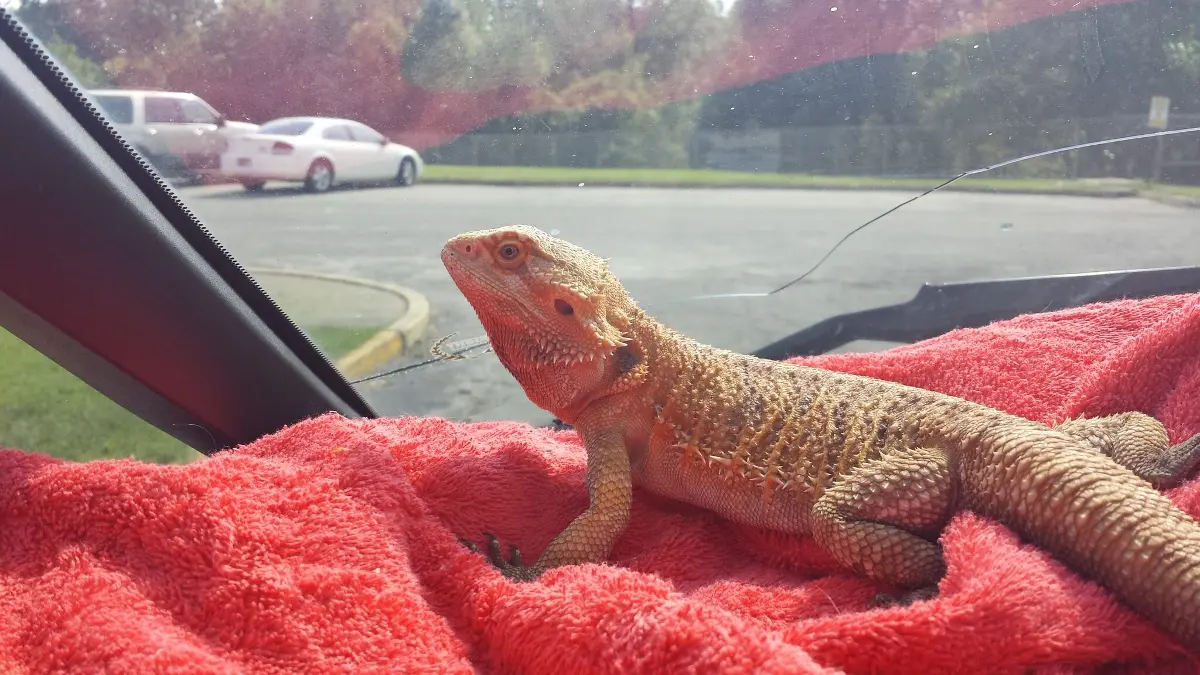Bearded Dragons Housing requires careful thought and consideration to recreate their natural Australian outback environment. Creating an ideal home for your bearded dragon involves more than simply buying a cage and placing food inside.
This includes choosing an appropriate enclosure type, adjusting the temperature and lighting to match their natural habitat, selecting a safe and easy-to-clean substrate, and introducing furnishings that offer stimulation and comfort.
Understanding these critical elements of Bearded Dragons Housing will not only ensure your pet’s well-being but also enhance the bond that you share.
Your Best Bearded Dragons Housing Options Guide
Follow these guidelines to create a comfortable and enriching perfect home for your bearded dragon.
Types of Enclosures
Although there are several housing options available for bearded dragons, it is essential to choose an enclosure that meets their specific needs.
Here are the most common types of enclosures and their advantages:
Glass Terrariums
Glass terrariums are a favorite choice among bearded dragon owners for several reasons:
- Visibility: Glass offers excellent visibility for both the owner and the bearded dragon, allowing for better observation and interaction.
- Temperature Control: Glass retains heat well and is suitable for maintaining the required temperature gradient.
- Ventilation: Many glass terrariums feature mesh tops, ensuring proper airflow.
- Easy Maintenance: Glass surfaces are easy to clean and disinfect.
Wooden Enclosures
Wooden enclosures, also known as vivariums or melamine cages, provide several benefits:
- Insulation: Wooden enclosures retain heat naturally, making it easier to achieve the ideal temperature for your bearded dragon.
- Customization: Wooden enclosures can be built to fit the desired size and design of the owner, including unique features like built-in cabinets or shelving.
- Durability: Wood is a robust material that can withstand the weight of your bearded dragon and their accessories, especially suitable for larger bearded dragons.
PVC Enclosures
PVC enclosures are gaining popularity due to their unique properties:
- Lightweight: PVC enclosures are easy to transport and move around when needed.
- Temperature and Humidity Control: PVC retains heat and humidity better than glass, creating a more consistent environment.
- Easy Maintenance: PVC is easy to clean and disinfect, and its non-porous surface helps prevent bacterial growth.
- Aesthetic Appeal: PVC enclosures often come in various colors and styles, allowing you to choose one that complements your home decor.
Essential Factors to Consider When Setting Up a Bearded Dragon Enclosure
Enclosure Size
An adult bearded dragon requires a minimum tank size of 40 gallons, but a 75 or 120-gallon tank is highly recommended to provide ample space for exploration and exercise.
Keep in mind that bearded dragons can reach up to 24 inches in length. Baby and juvenile dragons can be housed in smaller enclosures for the time being but will eventually need a larger space when they mature.
Lighting and Temperature Requirements
Creating an optimal temperature gradient is crucial for your bearded dragon’s health and well-being:
- Basking Area: Provide a basking spot with a temperature range of 95-110°F (35-43°C). Use a basking bulb or halogen lamp to achieve the desired temperature.
- Cool Side: Maintain a cooler side in the enclosure with temperatures between 75-85°F (24-29°C).
- Nighttime Temperature: Ensure the enclosure temperature remains above 65°F (18°C) during the night.
Additionally, bearded dragons need proper lighting to metabolize calcium and synthesize Vitamin D3:
- UVB Light: A high-quality UVB bulb designed explicitly for reptiles should be used for 12-14 hours per day.
- UVA Light: UVA light helps stimulate appetite and regulate the bearded dragon’s daily activities.
Substrate Selection
The right substrate can contribute significantly to your bearded dragon’s health:
- Safe Options: Reptile carpet, newspaper, paper towels, and non-adhesive shelf liners are easy to clean and minimize the risk of impaction when ingested.
- Unsafe Options: Avoid using sand, walnut shells, or other loose substrates that can cause impaction or gastrointestinal issues.
Furnishings and Decor
Furnishings and decor not only contribute to your bearded dragon’s comfort but also provide mental stimulation and enhance their quality of life:
- Basking Spots: Natural or artificial rocks and logs work great for basking areas.
- Climbing Accessories: Opt for sturdy branches, hammocks, or ledges that encourage climbing and exploration.
- Hiding Places: Ensure you provide hiding spots such as caves, half-logs, or purpose-built hides for additional security and privacy.
- Plants: Incorporate artificial or safe, non-toxic live plants to offer visual interest and stimulation.
- Water Source: Place a shallow water dish in the enclosure to provide drinking water and occasional soaking opportunities.
Take the time to arrange your bearded dragon’s enclosure mindfully, ensuring they have ample space to explore, bask, climb, and hide.
Wrapping Up
Creating the perfect habitat for your bearded dragon is crucial for their happiness and well-being. By understanding the different enclosure types, size requirements, temperature gradients, lighting needs, substrate selection, and necessary furnishings, you will provide a comfortable and stimulating environment that promotes the longevity and healthy development of your beloved pet.
